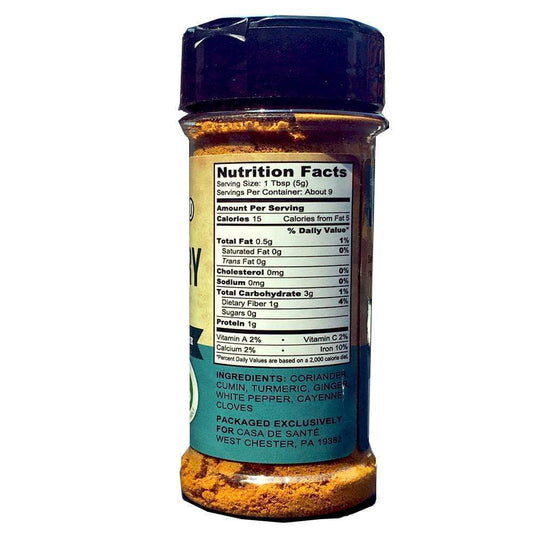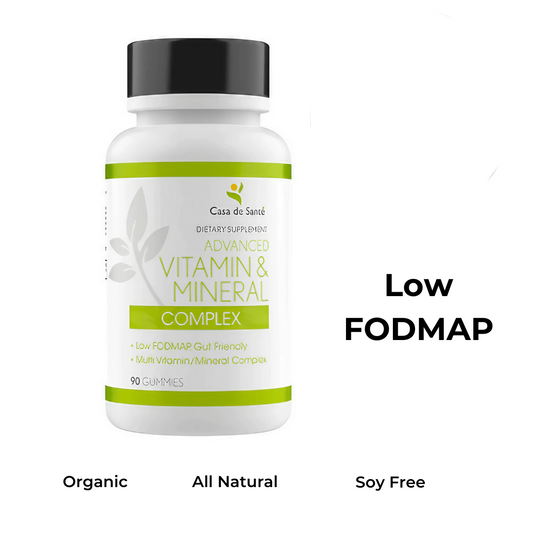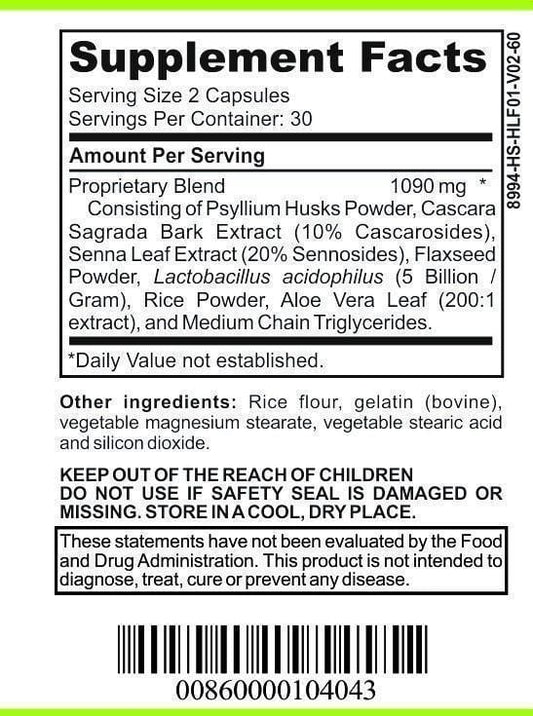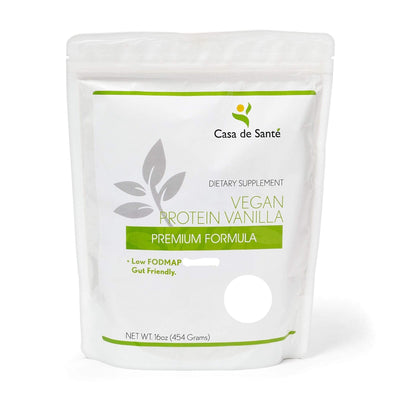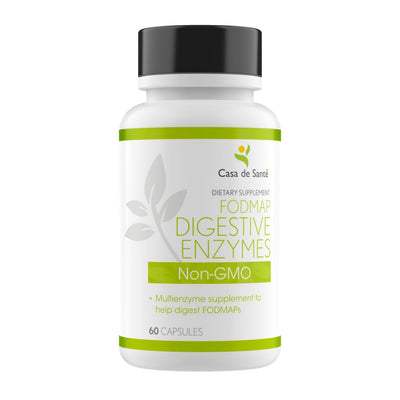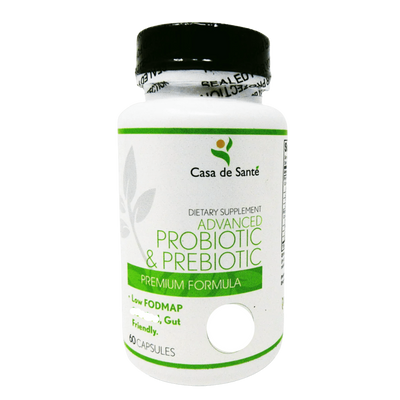Is Sesame Seed Gluten Free
Is Sesame Seed Gluten Free
Gluten has become a buzzword in recent years, as more and more people are adopting gluten-free diets. But what exactly is gluten, and is it present in sesame seeds? In this article, we will explore the world of gluten and its effects, as well as dive into the nutritional profile of sesame seeds. We will also discuss the gluten content in sesame seeds and provide some gluten-free alternatives for those looking to avoid gluten in their diet. Finally, we will offer tips on how to incorporate sesame seeds into a gluten-free diet. So let's start by understanding what gluten is and how it affects our health.
Understanding Gluten and Its Effects
Gluten is a protein composite found in wheat, barley, and rye. It acts as a binding agent, giving dough its elastic texture. Gluten consists of two main proteins: gliadin and glutenin. While gluten is harmless to most people, it can have adverse effects on individuals with gluten-related disorders.
What is Gluten?
Gluten is not only a protein composite but also a fascinating molecule that plays a crucial role in the culinary world. When flour is mixed with water, the gluten proteins form a network that gives dough its stretchy and elastic texture. This unique characteristic allows bakers to create fluffy bread, chewy bagels, and tender pastries.
However, gluten is not just limited to baked goods. It can also be found in other food products, such as soups, sauces, and even some unexpected places like cosmetics and medications. This widespread presence of gluten makes it essential for individuals with gluten-related disorders to be vigilant and knowledgeable about potential sources of gluten.
Common Sources of Gluten
Gluten can be found in a wide range of products, including bread, pasta, cereals, and baked goods. These staple foods are often the first that come to mind when thinking about gluten. However, gluten can also hide in unexpected places, such as sauces, dressings, and processed foods.
For example, soy sauce, a common condiment used in many Asian cuisines, often contains wheat as an ingredient. Salad dressings and marinades may also use wheat-based thickeners or malt vinegar, which contains gluten. Even some candies and chocolates may contain gluten as a binding agent or flavor enhancer.
It's important for individuals following a gluten-free diet to carefully read food labels and be aware of potential sources of gluten. Additionally, cross-contamination can occur during food preparation, so it's crucial to ensure that gluten-free foods are prepared in a gluten-free environment to avoid accidental exposure.
Health Implications of Gluten
For people with celiac disease, an autoimmune disorder, consuming gluten can trigger an immune response that damages the small intestine. This can lead to nutrient deficiencies, digestive issues, and other long-term health complications. Celiac disease affects approximately 1% of the population worldwide.
Non-celiac gluten sensitivity is another condition where individuals experience symptoms similar to celiac disease but without the same immune response. The exact mechanisms behind non-celiac gluten sensitivity are still not fully understood, but it is estimated to affect a larger percentage of the population compared to celiac disease.
It's important to note that sesame seeds are naturally gluten-free. However, there are some considerations when it comes to the gluten content in sesame seeds, which we will explore in the next section.
Sesame seeds, known for their nutty flavor and versatility, are a popular ingredient in various cuisines around the world. These tiny seeds are packed with essential nutrients like calcium, iron, and healthy fats. They can be sprinkled on top of bread, used as a seasoning in salads, or ground into a paste to make tahini.
When it comes to gluten, sesame seeds are naturally gluten-free. This means that individuals with gluten-related disorders, such as celiac disease or non-celiac gluten sensitivity, can safely consume sesame seeds without worrying about gluten contamination. However, it's important to be cautious when purchasing pre-packaged sesame products, as cross-contamination can occur during processing.
Furthermore, individuals with gluten-related disorders should be aware of the potential for cross-reactivity. Cross-reactivity happens when the body mistakenly identifies proteins in other foods as gluten and triggers a similar immune response. While cross-reactivity with sesame seeds is rare, it's always recommended to listen to your body and consult with a healthcare professional if you have any concerns.
The Nutritional Profile of Sesame Seeds
The Origin of Sesame Seeds
Sesame seeds have been cultivated for thousands of years and are believed to have originated in East Africa. Today, they are commonly used in various cuisines around the world, adding a nutty flavor and crunchy texture to dishes.
The history of sesame seeds dates back to ancient times, where they were highly valued for their medicinal properties. In ancient Egypt, sesame seeds were considered a symbol of immortality and were often used in religious rituals. They were also used by the ancient Greeks and Romans for their culinary and medicinal purposes.
As trade routes expanded, sesame seeds spread to different parts of the world. They became a staple in Middle Eastern and Asian cuisines, where they were used in a variety of dishes, from tahini sauce to sesame oil.
Nutritional Components of Sesame Seeds
Sesame seeds are packed with nutritional benefits. They are an excellent source of healthy fats, fiber, and plant-based protein. They also contain essential minerals such as calcium, iron, and magnesium. Additionally, sesame seeds are rich in antioxidants, which help protect the body against free radicals.
One of the key nutritional components of sesame seeds is their high content of healthy fats. These fats, including monounsaturated and polyunsaturated fats, are known to support heart health and reduce the risk of cardiovascular diseases. They also contribute to the feeling of satiety, making sesame seeds a great addition to a balanced diet.
In addition to healthy fats, sesame seeds are a good source of dietary fiber. Fiber plays a crucial role in digestion and can help regulate blood sugar levels and promote a healthy weight. Incorporating sesame seeds into your diet can provide a range of nutrients that support overall health and well-being.
Sesame seeds are also known for their mineral content. Calcium, iron, and magnesium are essential for maintaining strong bones, supporting red blood cell production, and promoting proper muscle function. Including sesame seeds in your meals can be a beneficial way to increase your intake of these important minerals.
Furthermore, sesame seeds are rich in antioxidants, such as sesamol and sesamin. These compounds have been shown to have anti-inflammatory and anti-cancer properties. Antioxidants help protect the body's cells from damage caused by harmful free radicals, reducing the risk of chronic diseases and promoting overall health.
Now, let's explore the gluten content in sesame seeds.
The Gluten Content in Sesame Seeds
Sesame seeds are a popular ingredient in various cuisines around the world. They are known for their nutty flavor and crunchy texture, making them a versatile addition to both sweet and savory dishes. But what about their gluten content? Let's explore further.
Processing and Its Impact on Gluten Content
When it comes to gluten, sesame seeds are generally considered to be low to nonexistent. However, it's important to note that there is a potential for cross-contamination during processing. Some facilities handle both gluten-containing grains and sesame seeds, which may pose a risk of cross-contact.
During processing, sesame seeds go through various stages, including cleaning, hulling, and sorting. While these steps are designed to remove impurities and ensure quality, there is still a possibility of gluten contamination if the processing equipment is not properly cleaned or if there are inadequate measures in place to prevent cross-contact.
To mitigate this risk, individuals with celiac disease or gluten sensitivity should opt for sesame seeds sourced from dedicated gluten-free facilities. These facilities have strict protocols in place to prevent cross-contamination and ensure that the sesame seeds remain gluten-free.
Cross-Contamination Risks with Sesame Seeds
Cross-contamination can occur at various stages of sesame seed production, from farming to processing to packaging. Let's take a closer look at each stage:
Farming: Sesame seeds are grown in fields, alongside other crops. If gluten-containing grains are grown in close proximity, there is a possibility of cross-pollination, which could lead to gluten contamination in the sesame seeds.
Processing: As mentioned earlier, processing facilities that handle both gluten-containing grains and sesame seeds can pose a risk of cross-contact. It is crucial to choose reputable brands that prioritize allergen control and adhere to strict manufacturing practices. Look for certifications or labels that indicate gluten-free status.
Packaging: Even after the sesame seeds have been processed, there is still a risk of cross-contamination during packaging. Facilities that package multiple products, including those containing gluten, need to have proper procedures in place to prevent cross-contact.
It's important to note that the level of gluten contamination in sesame seeds can vary depending on the specific production practices and the diligence of the manufacturers. Therefore, it is always recommended to read labels carefully and contact the manufacturer if you have any concerns or specific dietary requirements.
If you have a severe gluten allergy or intolerance, it's recommended to consult with a healthcare professional or a registered dietitian for personalized advice on consuming sesame seeds. They can provide guidance based on your individual needs and help you make informed decisions about your diet.
Gluten-Free Alternatives to Sesame Seeds
Sesame seeds are a common ingredient in many dishes, but if you prefer to avoid them due to dietary restrictions or personal preference, there are plenty of alternative seeds and nuts that you can incorporate into your diet. Not only do these alternatives offer similar nutritional benefits, but they also add a delightful crunch and flavor to your meals.
Safe Seed and Nut Alternatives
One popular gluten-free alternative to sesame seeds is chia seeds. These tiny black seeds are packed with omega-3 fatty acids, fiber, and antioxidants. They can be sprinkled on top of yogurt, added to smoothies, or used as an egg substitute in baking recipes.
Flaxseeds are another excellent option. These small brown seeds are rich in fiber, protein, and healthy fats. They can be ground into a fine powder and used as a binding agent in recipes, or sprinkled on top of oatmeal, salads, or roasted vegetables for added texture.
Sunflower seeds, with their nutty flavor and crunchy texture, are also a great substitute for sesame seeds. They are a good source of vitamin E, magnesium, and selenium. You can enjoy them as a snack, sprinkle them on top of salads, or use them as a coating for chicken or fish.
If you're looking for a nut alternative, almonds are a fantastic choice. They are not only gluten-free but also packed with protein, fiber, and healthy fats. Almonds can be enjoyed on their own as a snack, used as a topping for salads or yogurt, or ground into almond flour for gluten-free baking.
Gluten-Free Grains and Cereals
In addition to seeds and nuts, there are also gluten-free grains and cereals that can be used as alternatives to sesame seeds. These grains not only provide a satisfying texture but also offer a wide range of nutrients.
Quinoa, often referred to as a "superfood," is a versatile gluten-free grain that is rich in protein, fiber, and various vitamins and minerals. It can be used as a base for salads, added to soups or stews, or even used as a substitute for rice in stir-fries.
Rice, a staple in many cuisines around the world, is naturally gluten-free and comes in various forms such as white, brown, black, and wild rice. It can be enjoyed as a side dish, used as a filling for stuffed vegetables, or transformed into delicious rice-based desserts.
Millet, a small grain with a mild, nutty flavor, is another gluten-free option. It is rich in fiber, magnesium, and antioxidants. Millet can be cooked and used as a base for pilafs, added to soups or stews, or ground into flour for gluten-free baking.
Buckwheat, despite its name, is not related to wheat and is naturally gluten-free. It is a nutrient-dense grain that is high in protein, fiber, and minerals such as manganese and magnesium. Buckwheat can be used to make gluten-free pancakes, soba noodles, or as a substitute for oats in porridge.
By incorporating these gluten-free alternatives into your diet, you can enjoy a wide variety of flavors and textures while still maintaining a sesame seed-free lifestyle. Experiment with different combinations and recipes to discover your new favorite ingredients!
Incorporating Sesame Seeds into a Gluten-Free Diet
Gluten-Free Sesame Seed Recipes
There are plenty of ways to enjoy sesame seeds while following a gluten-free diet. From toasted sesame seed sprinkles to tahini sauce, sesame seeds can add flavor and texture to a variety of dishes. Try incorporating them into homemade energy bars, salads, stir-fries, or as a topping for gluten-free bread.
Tips for Buying and Storing Sesame Seeds
When purchasing sesame seeds, look for those that are labeled gluten-free and sourced from dedicated facilities. Store them in an airtight container in a cool, dry place to maintain freshness and prevent rancidity.
In conclusion, sesame seeds are naturally gluten-free and can be safely consumed by most individuals following a gluten-free diet. However, it's important to be aware of potential cross-contamination risks during processing and choose reputable brands that prioritize allergen control. By incorporating sesame seeds into your gluten-free diet, you can enjoy their nutritional benefits and add variety to your meals.














